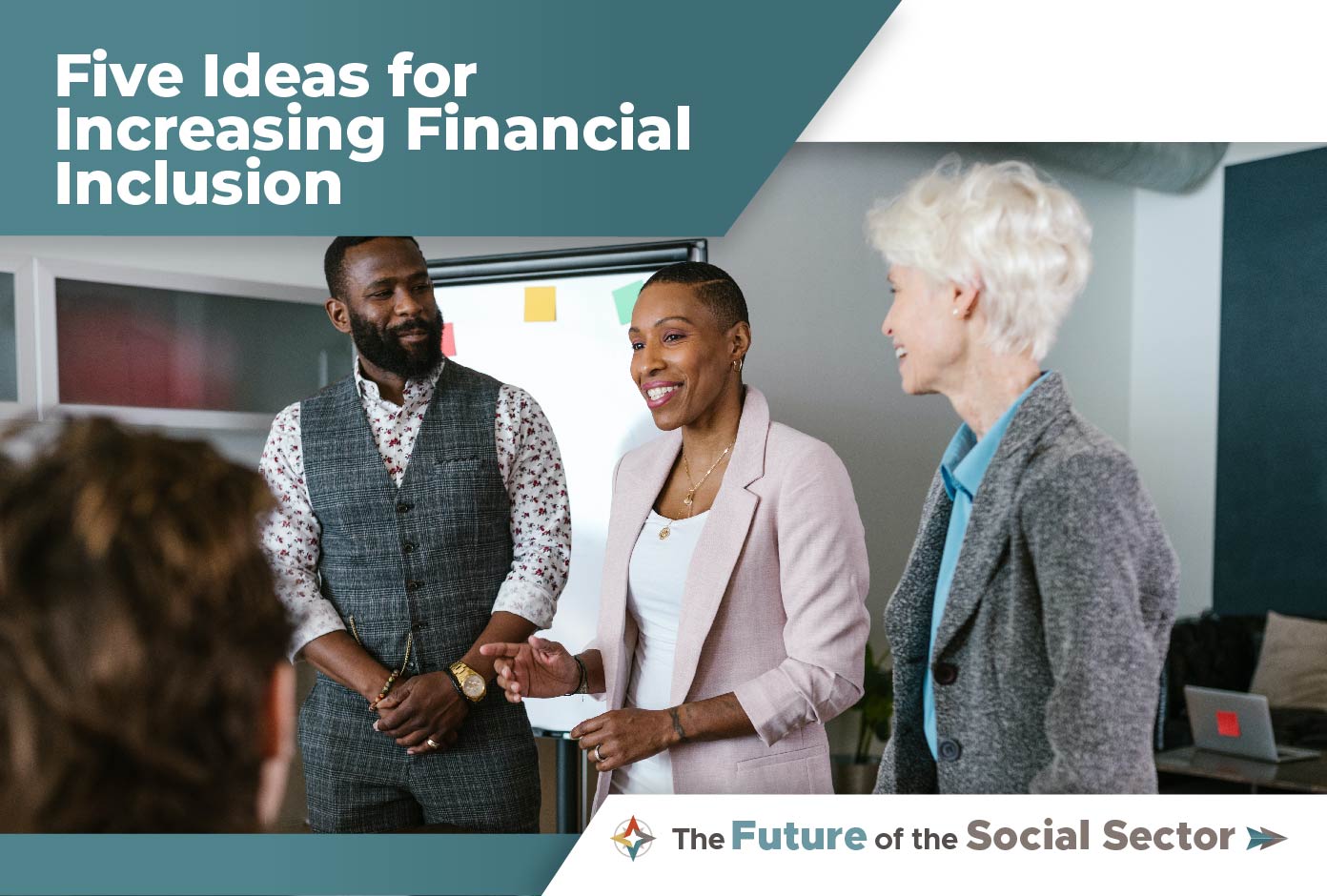Five Ideas for Increasing Financial Inclusion

Due to the pandemic, the ways in which governments, philanthropy, and corporations address economic security and mobility have undergone rapid innovation over the past 18 months. In our latest Future of the Social Sector virtual convening, I spoke with Elena Chavez Quezada, head of investments at the Chavez Family Foundation, and Camille Busette, senior fellow and director of the Brookings Institution’s Race Prosperity and Inclusion program, about this innovation and what we in the philanthropic sector can learn from it. The scholarship, empathy, and personal experience they brought to the conversation was inspiring, and their insights and suggestions amounted to the beginning of a playbook for action.
Based on what we discussed, I would like to offer the following five takeaways as topics to consider for the community, and in particular for donors who are thinking about their upcoming grant cycles:
- We must define financial inclusion as a goal
Financial inclusion involves a government and financial system set up to support those who are facing the most barriers to economic security and mobility—without imposing a particular set of values from the outset. Examples of imposed values include operating under the assumption that people are credit worthy only if they have already used credit cards, that people who carry mortgages are more responsible than people who don’t (even though the former are the ones in debt) and so on. These biases come in the way of defining broader financial inclusion goals. Philanthropy must help create a financial system that considers the formal and informal financial systems people use to address their basic needs and opportunities to build wealth.
- We must work toward changing the narrative about workers
Philanthropy should help reframe how we as a society think about workers, especially workers of color and hourly workers, and we all need to have more explicit conversations about the systems that have constrained them. Society at large and the philanthropy sector in particular have undervalued and overlooked these workers for too long. The pandemic has shined a spotlight on their plight. To shift the focus to the systems that created the conditions these workers must endure, we must engage in better asset-based framing, both to honor the dignity of the workers and to place their work in a larger context.
- We must understand the social forces affecting economic mobility and financial inclusion
It is crucial to remember that people live in discrete social networks and that economic mobility works through such networks differently in different communities. Philanthropists who want to support people within a particular community need to invest in understanding those networks, which are sometimes (but not always) hyperlocal. That understanding will likely result in differentiated strategies across communities.
- We must talk honestly about scale and scaling
As donors who made their fortunes in the technology sector become more prominent in the field of philanthropy, the concept of scale comes up repeatedly. Donors should think about why they want to scale: Who benefits from it? What assumptions might we be making? Is it possible to scale an approach that worked in one community to another? Philanthropy will always be about having an impact in a specific place, and funders thinking of scaling should incorporate voices from the community they will impact by scaling.
- We must engage authentically with new communities
If funders want to have a real dialogue with a community, they have to take time, build trust, and bring humility to the effort. It is always worth thinking about the principles of human-centered design; and it is crucial to understand power dynamics. Think hard about who isn’t in the room and get feedback from those who aren’t mostly like you.
As we emerge from the pandemic and continue to work toward improving economic mobility and financial stability in the aftermath, it is more relevant than ever to think critically about the structures we create and support to ensure long-term, sustainable success. If you were unable to catch the event, or would like to hear it again, you can watch the recording here.
If you have any questions or insights about the Future of the Social Sector, feel free to email us.
As always, I am reinvigorated by this work and look forward to continuing to build the future of the social sector with you.
Sampriti Ganguli
CEO
